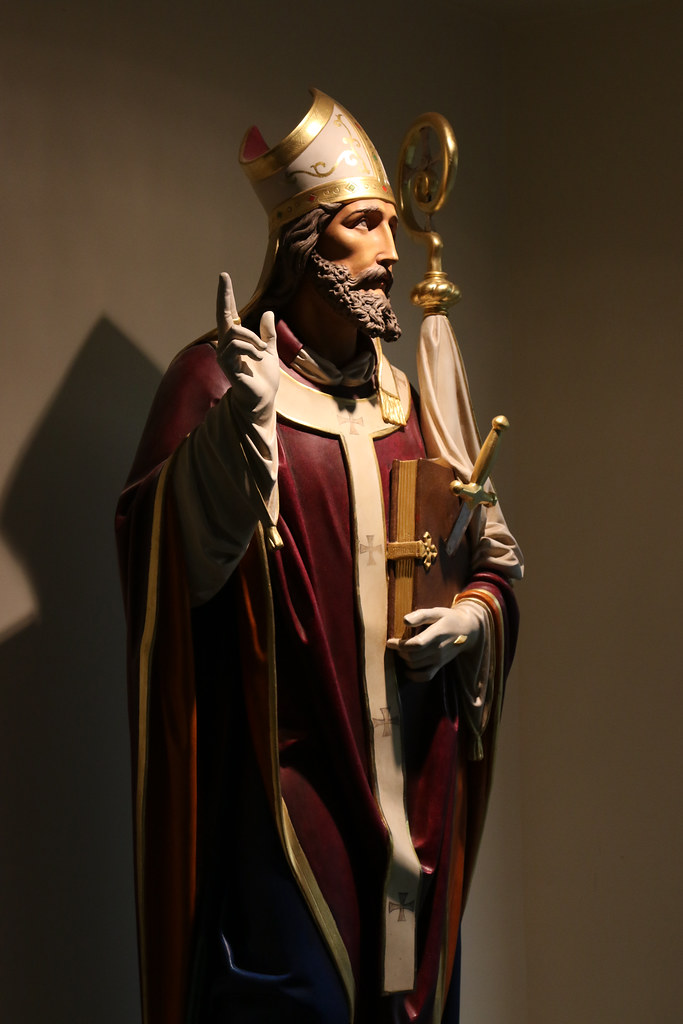
Early Life and Call to Mission
He received his early education at the monastery of Exeter and later at Nursling, where he became a monk and eventually the head of the monastery school. His scholarly pursuits and pious nature marked him as a man of deep faith and commitment.
Despite his promising career in the monastic life in England, Winfrid felt a strong call to missionary work. Inspired by the example of earlier missionaries like Saint Willibrord, who evangelized the Frisians, Winfrid decided to dedicate his life to spreading Christianity among the pagan peoples of continental Europe.
Missionary Journeys and Challenges
In 716, Winfrid made his first missionary journey to Frisia, a region in the modern-day Netherlands and Germany. However, political instability and resistance from local leaders, particularly the pagan King Radbod, hindered his efforts. Undeterred, Winfrid returned to England, but his zeal for missionary work only grew stronger.
In 718, Winfrid traveled to Rome, where Pope Gregory II renamed him Boniface and commissioned him as a missionary to the Germanic peoples. Armed with a new name and papal support, Boniface set out to evangelize the regions of Hesse, Thuringia, and Bavaria. His work involved not only preaching but also organizing the Church in these areas, establishing dioceses, and building churches.
One of Boniface’s most famous acts was the felling of the sacred oak tree dedicated to Thor in the region of Hesse. This bold act was a public demonstration of the powerlessness of the pagan gods and helped to convince many locals of the supremacy of the Christian God. The wood from the oak was reportedly used to build a chapel, symbolizing the triumph of Christianity over paganism.
Church Reformer and Organizer
Boniface’s work extended beyond evangelism; he was also a significant church reformer and organizer. Recognizing the need for a well-structured church hierarchy, he established dioceses and monasteries, ensuring that the newly converted Christians had access to proper religious instruction and clergy. He worked closely with the Frankish rulers, such as Charles Martel and his son Pippin the Short, securing their support for his missionary activities.
In 732, Pope Gregory III appointed Boniface as archbishop and later as papal legate to the German territories. This position gave him authority over the church in these regions and the task of reforming the Frankish church, which had fallen into disorder. Boniface convened synods, deposed unworthy clergy, and introduced reforms to standardize church practices and discipline.
Martyrdom and Legacy
In 754, at around 80, Boniface decided to return to the mission field to continue his work among the still largely pagan Frisian people. On June 5 of that year, while preparing to confirm a group of converts near the river Borne, Boniface and his companions were attacked by a group of armed pagans. In a peaceful gesture, Boniface instructed his followers not to resist, and he was martyred along with fifty-two others.
Boniface’s body was eventually interred at the monastery of Fulda, which he had founded and which became one of the most important centers of Christian learning and culture in medieval Germany.
Saint Boniface is venerated as the Apostle of the Germans, and his legacy lives on in the strong Christian roots of the region. His efforts laid the foundation for the Christianization of Germany and the integration of the Germanic peoples into the Christian world. His feast day is celebrated on June 5, the anniversary of his martyrdom. Boniface is remembered not only for his missionary zeal but also for his dedication to church reform and his role in shaping the medieval church in Europe.